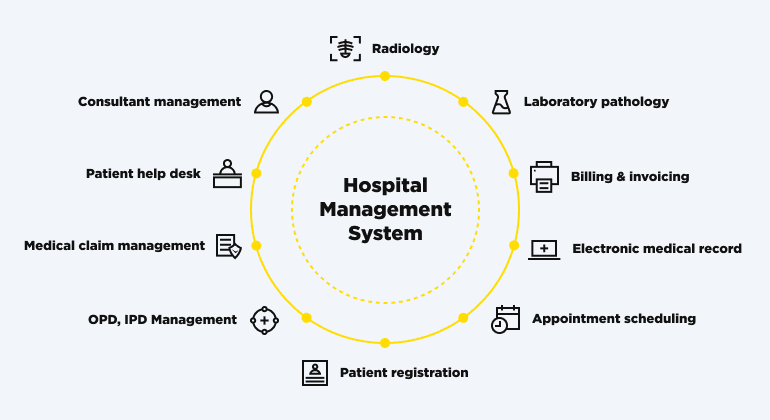Software installation on Ubuntu 16.04 is done in several stages described below.
Remember to issue sudo command (sudo su -) when following the instruction.
Update the software
sudo apt-get update
Install Apache 2
apt-get install apache2
Configure Apache2
nano /etc/apache2/apache2.conf ## Fix the warning when restarting Apache ServerName localhost ## Enable php AddType application/x-httpd-php .php .phtml ## Set up UTF-8 encoding AddDefaultCharset UTF-8
Restart Apache
service apache2 restart
Open http://localhost/ and enjoy.
Set up virtual hosts (VirtualHost)
For lazybones, we have a bitbucket template (only for local hosts).
Download the file. Put it into /var/www.
Give permission to execute the script:
chmod +x /var/www/vhosts.sh
The example of creating a host file:
sudo /var/www/vhosts.sh mysite.loc
You can skip the next steps regarding virtual hosts.
Write in the hosts /etc/hosts (nano /etct/hosts)
127.0.0.1 mysite.loc
Go to “/etc/apache2/” directory.
Take a look what's inside:
root@HP:/etc/apache2# ls -l total 88 -rw-r--r-- 1 root root 7728 apr 26 22:55 apache2.conf -rw-r--r-- 1 root root 7691 apr 26 22:34 apache2.conf~ drwxr-xr-x 2 root root 4096 apr 26 22:52 conf-available drwxr-xr-x 2 root root 4096 apr 26 22:52 conf-enabled -rw-r--r-- 1 root root 1782 jan 3 16:48 envvars -rw-r--r-- 1 root root 31063 jan 3 16:48 magic drwxr-xr-x 2 root root 12288 apr 26 22:27 mods-available drwxr-xr-x 2 root root 4096 apr 26 22:27 mods-enabled -rw-r--r-- 1 root root 320 jan 7 15:23 ports.conf drwxr-xr-x 2 root root 4096 apr 26 22:43 sites-available drwxr-xr-x 2 root root 4096 apr 26 22:44 sites-enabled
In the “sites-available” directory you'll find configurations of the available hosts and in the “sites-enabled” directory there are links to active hosts.
Go to available hosts and create a configuration file for mysite.loc. By the way, if your default configuration file ends with .conf, create a new configuration files with *. conf extension.
nano sites-available/mysite.conf
There we write the following:
ServerName mysite.loc DocumentRoot /var/www/mysite.loc AllowOverride All
This is enough to get your local host working. Now you should create a link on it in sites-enabled.
a2ensite mysite.conf
Mind the trap: if you get an error and you can't create a link, you can fix it this way:
ln /etc/apache2/sites-available/mysite.conf /etc/apache2/sites-enabled/
Now, you just need to reload the Apache2 configurations:
service apache2 reload ## or, if needed service apache2 restart
So Apache2 is working, the first host has been added.
Install MySQL
MySQL is available in the Ubuntu repositories. It is divided into several packages.
To install the MySQL server, run the following command:
sudo apt-get install mysql-server
The configure script will ask a user for an admin password (root) of the database.
Install PHP 5.6
First of all, you have to delete all older versions if you have any.
sudo apt-get purge `dpkg -l | grep php| awk '{print $2}' |tr "\n" " "`
Add PPA
sudo add-apt-repository ppa:ondrej/php
Update
sudo apt-get update
Install PHP
sudo apt-get install php5.6
Install additional modules
sudo apt-get install php5.6-mbstring php5.6-mcrypt php5.6-mysql php5.6-xml
Review the version:
sudo php -v PHP 5.6.26-1+deb.sury.org~xenial+1 (cli) Copyright (c) 1997-2016 The PHP Group Zend Engine v2.6.0, Copyright (c) 1998-2016 Zend Technologies with Zend OPcache v7.0.6-dev, Copyright (c) 1999-2016, by Zend Technologies
Install PhpMyAdmin
apt-get install phpmyadmin
Configure it to your needs: point out that you use Apache2, write the database password and the PhpMyAdmin password.
Trap 1: http //localhost/phpmyadmin not found ubuntu
Solution:
nano /etc/apache2/apache2.conf ## add it at the end of the file Include /etc/phpmyadmin/apache.conf
Trap 2: http //localhost/phpmyadmin HTTP ERROR 500
sudo apt-get install php-mbstring php-gettext sudo phpenmod mcrypt sudo phpenmod mbstring sudo service apache2 restart
If you've done everything right, you'll have a configured ready-to-use local server. Good luck!





